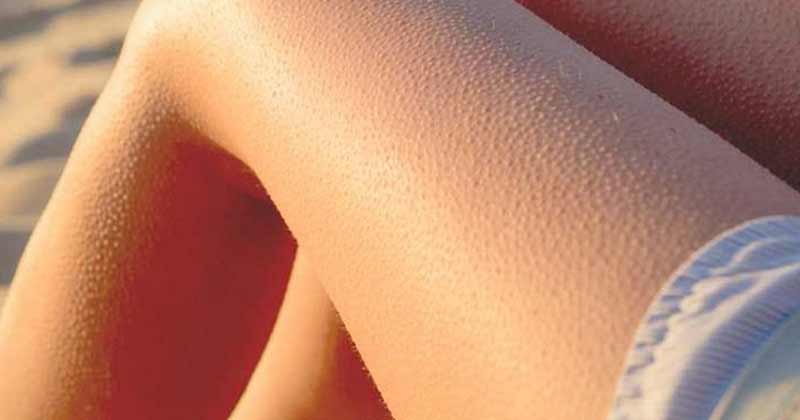People can get goosebumps almost all over their bodies in an emotional moment or cold stimulus. Tiny muscles in our skin called hair follicle muscles contract. This affects a hair follicle to which the root of a hair is attached. As a result, the hair, which actually lies flat, straightens up. The sebaceous glands of the muscles are compressed and there is a small swelling. Small hills become visible, just like the skin of a plucked goose. And hence the name Goose Bumps.
Goosebumps are a reflex that goes back to a time when people had a lot more body hair. Back then, the hair had two uses. If the body was exposed to cold, the hair straightened up. The increased volume of air under the hair resulted in better heat insulation. This phenomenon is still visible in animals today. They fluff up to stay warm.
Even in a threatening situation, the goose bump reflex ensured that our ancestors raised their hair. If the whole body hair is straightened up, the body looks bigger and makes a more fierce impression on the enemy. This can also be observed in animals today, for example, dogs and cats get a so-called brush when they feel threatened.

In the course of its development, humans have found better and better ways to protect themselves from the cold and enemies. Though, the once dense hair all over the body receded, the goosebump reflex remained. However, people do not get goose bumps on the soles of the feet and palms of the hands because there is no hair that could straighten up.
Goosebumps Moments Cannot Be Measured

Unpleasant noises such as chalk on a blackboard or the squeaking of styrofoam can cause goose bumps in humans, even if this does not actually involve a dangerous situation. This phenomenon can also be traced back to the original instinct. In prehistoric times, dangerous situations were usually accompanied by loud, shrill noises and then it was necessary to counter the announcing attacker as effectively as possible, that is, with the fur up.

It becomes really complicated for science to explain goosebumps moments that are triggered by music or emotional film scenes. Regarding music, there are people who react to music relatively quickly and get goose bumps. The experts have realized that the development of goose bumps depends on several factors like what does the subject associates with the music? What is his character? Questions for which no universal answers can be found for all people.

The situation is similar with touching scenes in a film. It is not scientifically feasible why some people get goose bumps, while others do not. Because even in this case every person reacts individually to what is perceived. Personal taste and memories also play a role here, neither can be measured here either. Or it might also be genetic or hereditary that some of our ancestors were affected by a specific situations or certain factors that triggered goosebumps and it still shows up, even today, in some of us.


